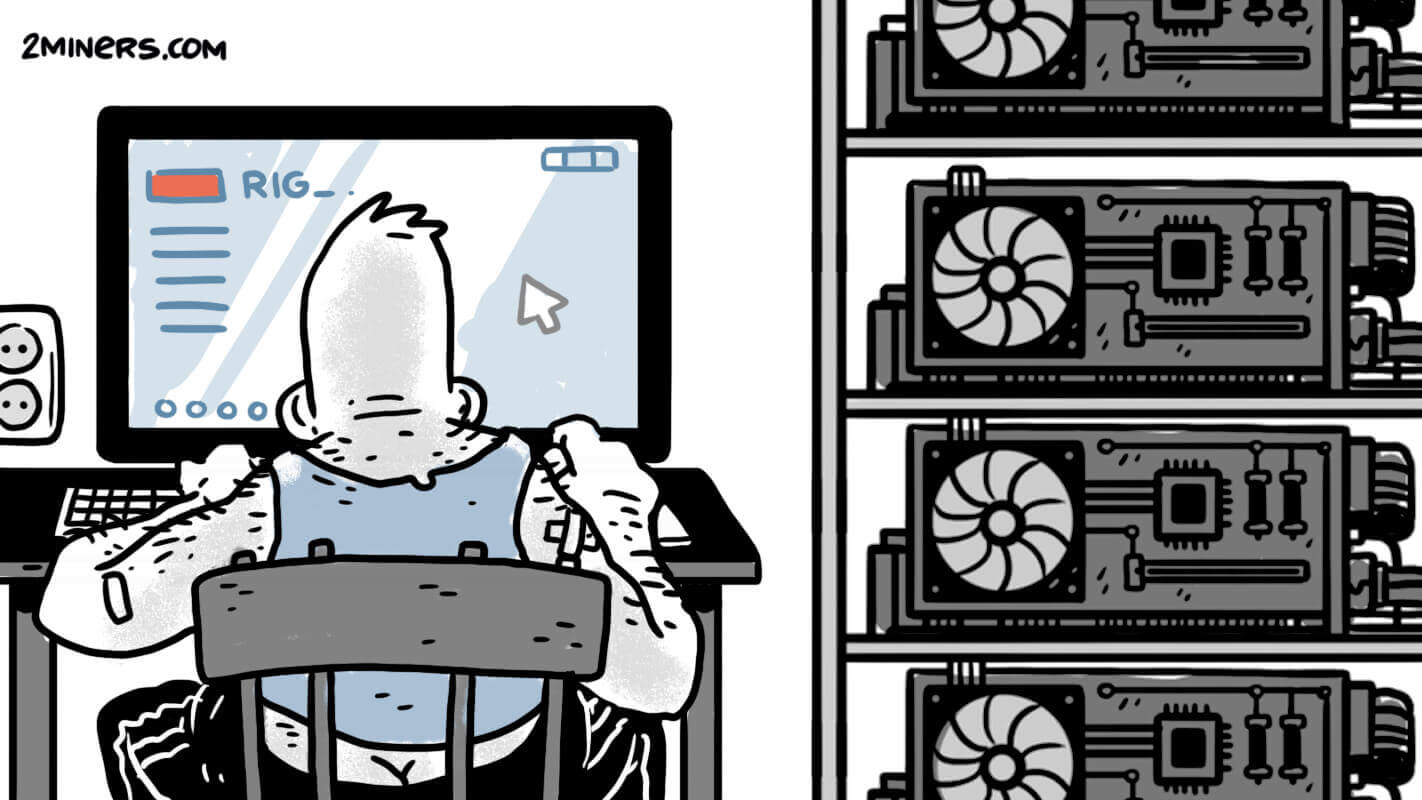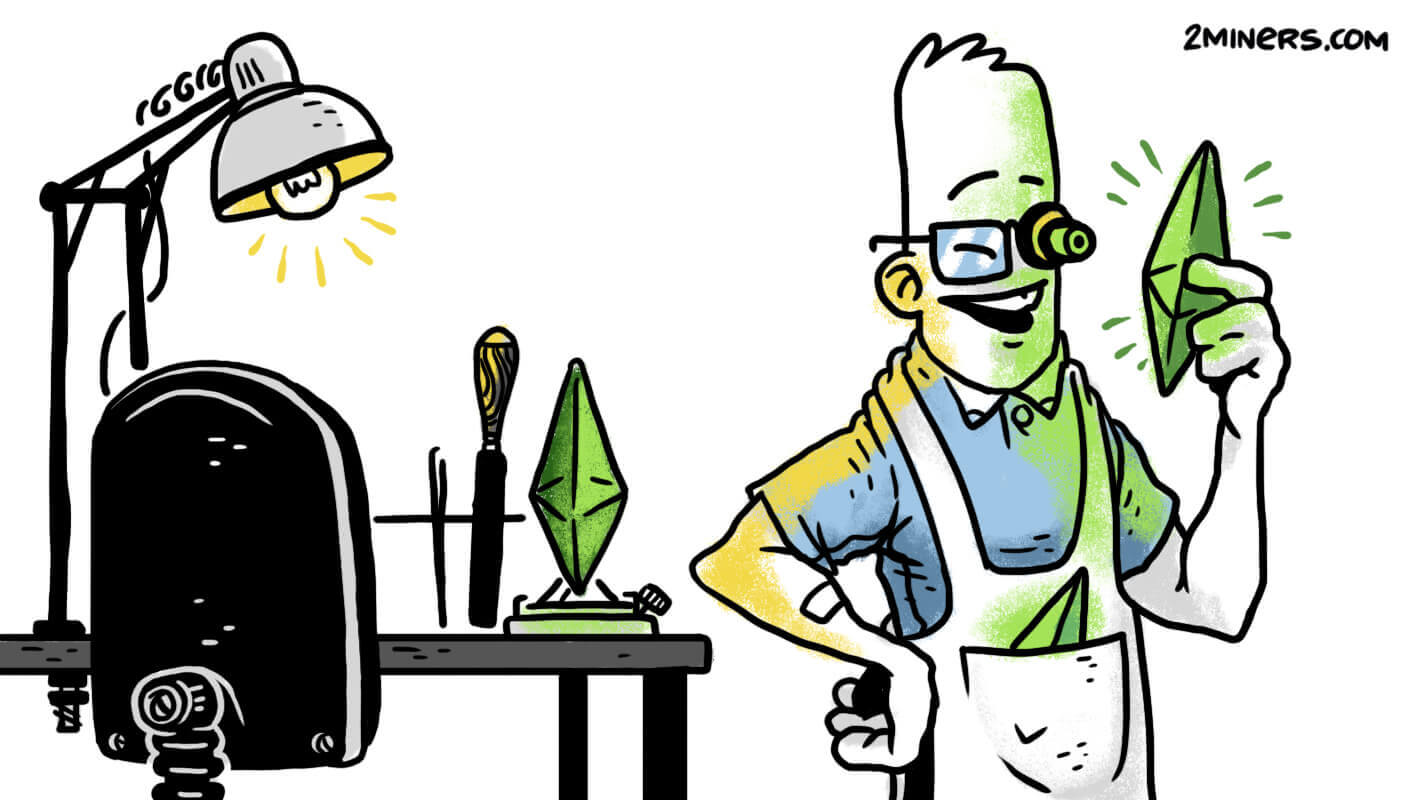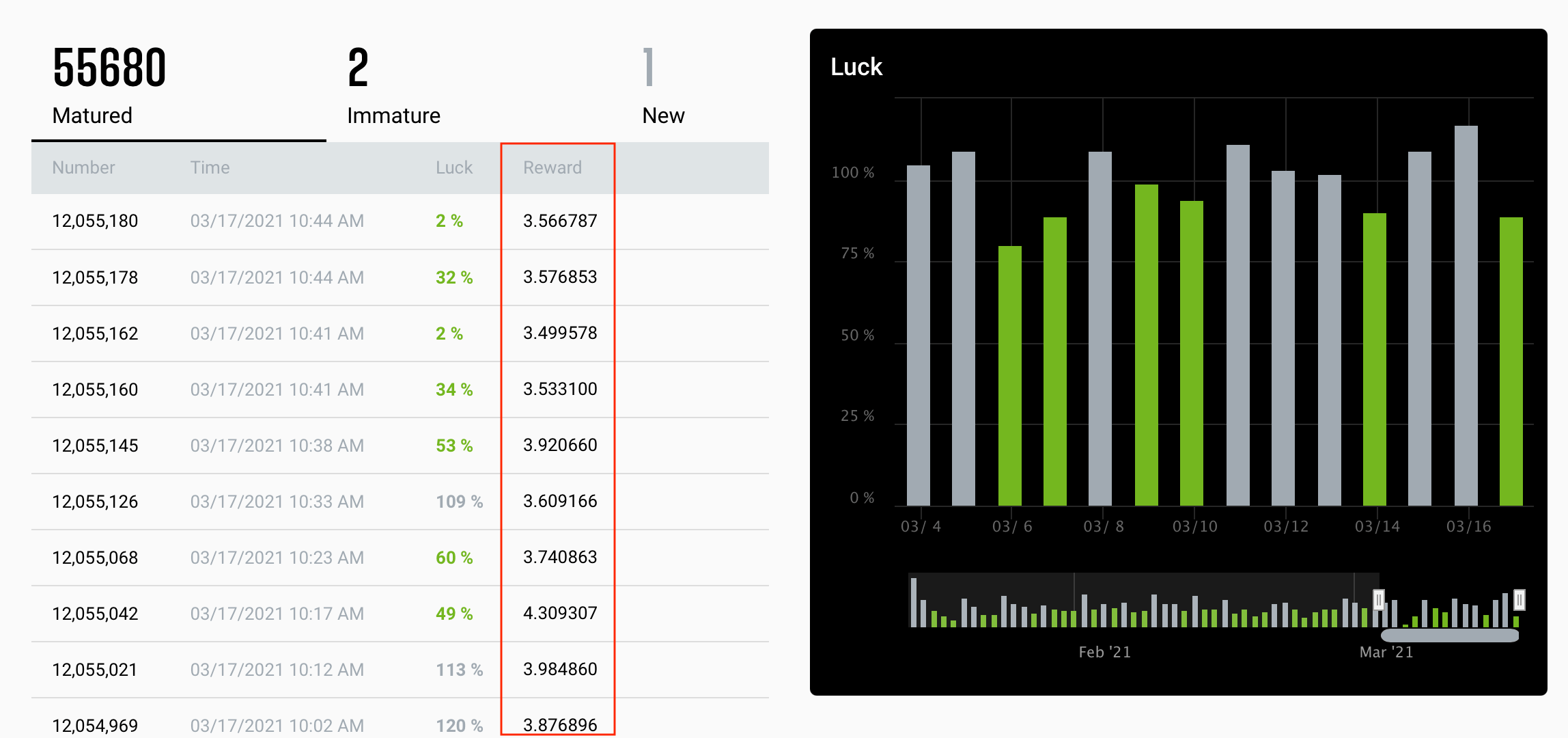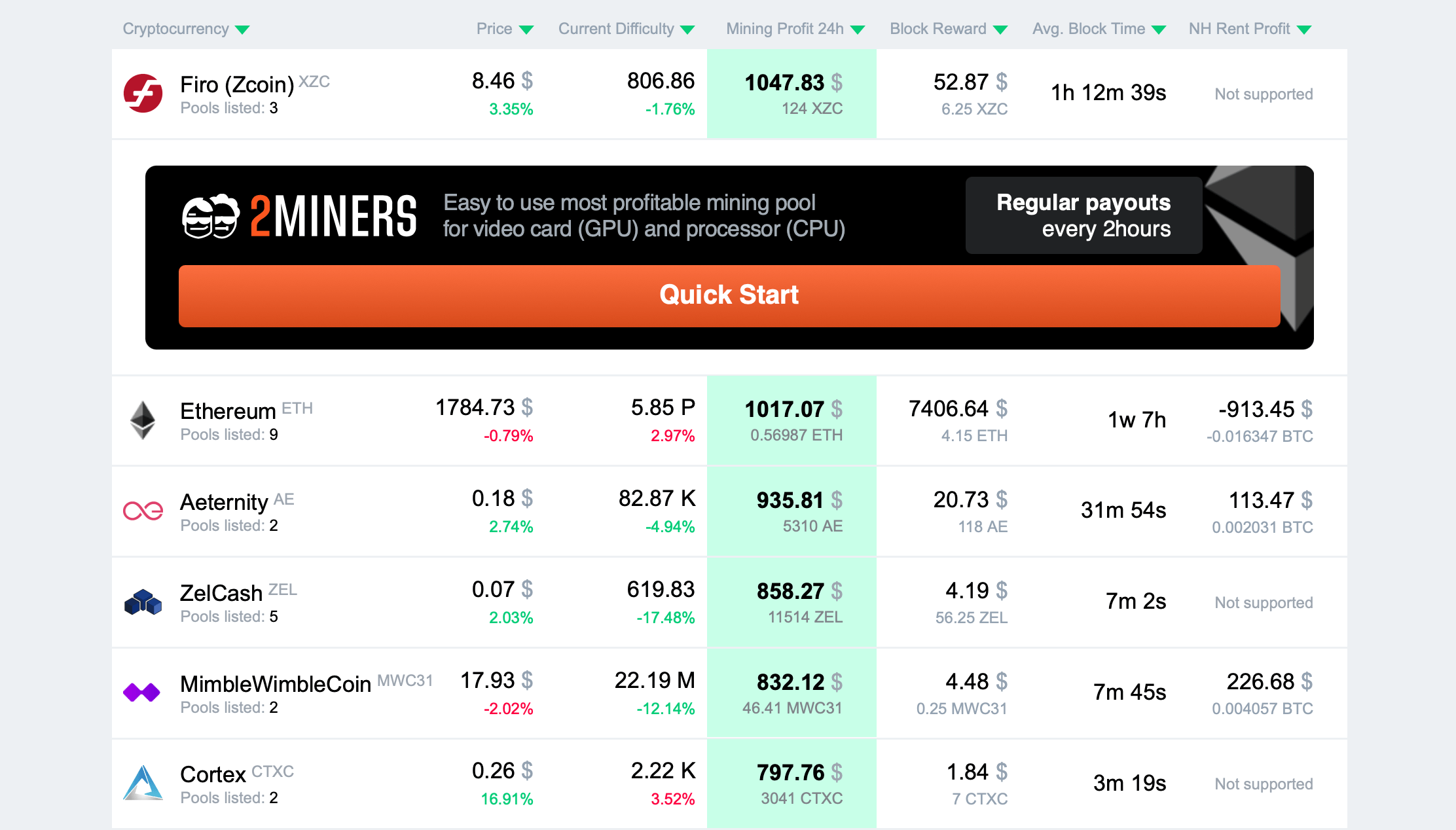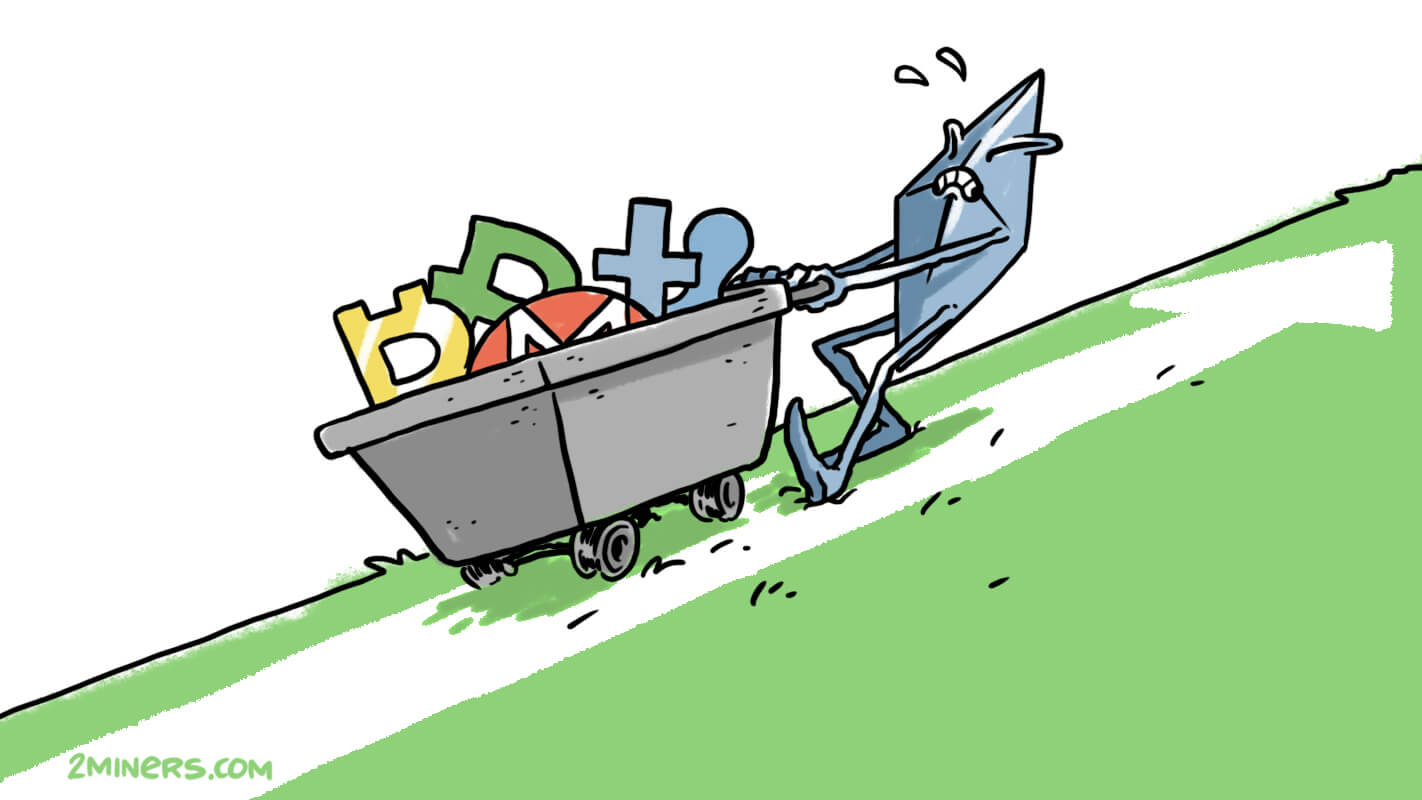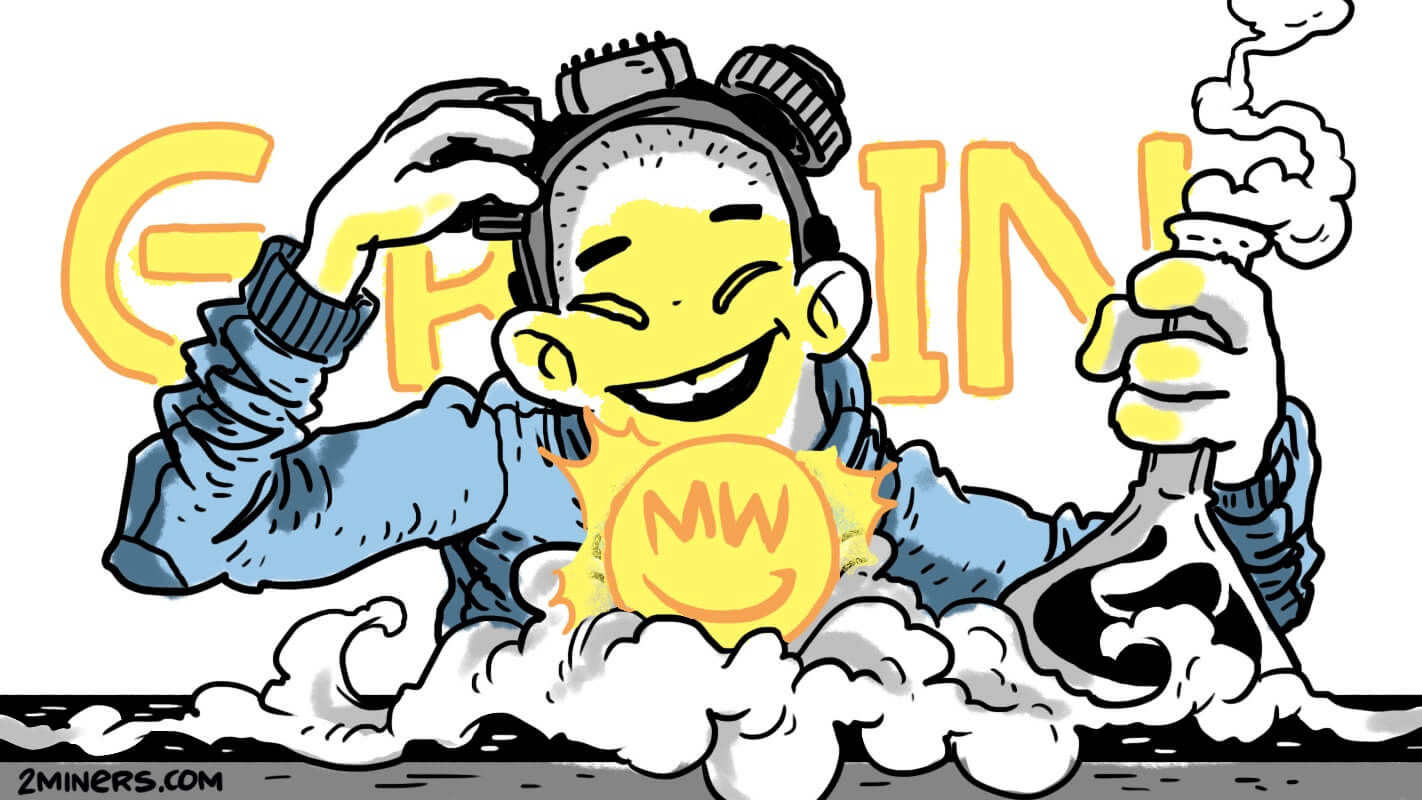Contents
What Affects ETH Mining Profitability?
Let’s get straight to the point. Say, you have a mining rig that operates 24/7. It doesn’t cause you any issues, doesn’t freeze, and has a stable hash rate. The rig size doesn’t matter. It can be an enormous factory or just one GPU in a gaming computer. All the factors that we are going to discuss affect all mining rigs regardless of their size.
Clearly we assume that a rig works without failures. If your graphics card disconnects every two hours or your rig reboots for an unknown reason, make sure to solve these problems before getting to mining profitability.
What affects Ethereum mining profits?
- Ethereum network difficulty: the higher the difficulty (that is, the competition with other miners), the worse.
- Ethereum blockchain load: the more contracts and transactions are executed in the ETH network, the better.
Let’s get into more detail about each.
Ethereum Network Hash Rate and Difficulty
The average block find time in the Ethereum network is 13.2 seconds. It may take you one second or one minute to find a block, but the average time is 13.2 seconds. This is the most important parameter in ETH network. The network always monitors it and makes sure that it stays at 13.2. The more miners there are in the Ethereum network, the higher the network difficulty. Higher difficulty means that the network is giving miners more difficult problems that they need to solve to find a block. And vice versa. The fewer miners there are in the network, the easier the problem.
In other words, once the number of miners in the network increases, they find blocks more often, and so the network increases the difficulty. When there are not enough blocks found and there are few miners, the network lowers the difficulty.
Since the average block find time stays the same, the number of blocks found daily stays the same as well. The reward “pie” is the same every day. There are 6500 blocks found by all Ethereum miners daily. Say, your hash rate is 100 Mh/s and it always stays the same. Clearly if the hash rate of all miners in the world is 1000 Mh/s, you get one tenth of the “pie”. If the hash rate of all miners in the world is 10000 Mh/s, you get one hundredth of the “pie”, and so on.
The more miners there are in the network, the higher the competition and the fewer ETH you mine daily.
Luckily Ethereum network hash rate is so high at this point that another hundred miners would barely affect the hash rate. But if you consider the network hash rate growth on a yearly basis, you could notice a 2.5x increase. You can always find the current and lifetime Ethereum hash rate on this chart.
Read more about the hash rate in: Ethereum Network Difficulty and Hashrate Explained.
Ethereum Blockchain Load
Ethereum network is used for:
- Transactions. John sends 1 ETH to Mary, Sara sends 0.3 ETH to Jack, etc.
- Smart Contracts. This could be anything: crypto kitties and other NFTs, decentralized finances like trade exchanges, etc.
For each found block in the Ethereum network miners get 2 ETH. This is a standard reward that encourages miners to mine. Miners will get rewards even if users are not executing any transactions.
Each network user wants their transaction or smart contract to be executed as fast as possible as nobody likes to wait. The more active the network users, the higher the fees for transactions and smart contracts. Miners are smart. And so first of all they include in blocks transactions with the highest fees to maximize their profits.
When we say "miners", we mostly mean mining pools. Ethereum solo mining is almost impossible as it requires too much power.
A mining pool gets 2 ETH for each found Ethereum block plus fees for transactions and smart contracts included in the block. On a not very busy day transactions can account for an additional reward of 1 ETH. Add it to the standard reward of 2 ETH, and the pool gets 3 ETH per block. On busy days fees within a block can reach 7 ETH, 8 ETH, 10 ETH, etc.
Here is an example. The block reward is 24.88 ETH, out of which 2 ETH is the reward for the found block and 22.88 ETH is the fee for transactions within the block. So the 2Miners pool got 24.88 ETH for one block and then distributed the reward among their miners.
If you want to see what the fees are at the moment, you can go to the Found Blocks section of the 2Miners Ethereum pool. Look at the Reward column. The bigger the blocks, the better for miners and the worse for regular Ethereum network users as they have to pay higher fees.
Smart contracts load the network much more than regular transactions. If you see that the network is overloaded, the cause is smart contracts, that is DeFi projects, various exchanges, kitties, etc. If you want to understand how ETH network fees are measured and learn about the gas and its price, make sure to read: What is Gas in Ethereum? Ethereum Transaction Fees.
The more the network is loaded by transactions and smart contracts, the more ETH you mine daily.
In July 2021 Ethereum plans to implement the EIP-1559 network upgrade. It will lower the fees for Ethereum users, but also lower miner rewards. How much lower will rewards be? It is still unclear, but we will update the article as soon as we have more details.
Why Do Mining Calculators Lie?
Mining calculators can’t predict the future. They work with past data. A calculator is just a tool that helps you estimate mining profitability. A calculator doesn’t know what the network load is going to be in an hour or what the mining pool luck is today, tomorrow, etc. Nobody knows.
Here is an example.
The network is filled with crypto kitties. Everybody is selling them. Or a certain project promises free tokens, and everybody is rushing to send a request to get them. Fees in Ethereum network increased, miner reward doubled. You open the calculator and see that at the moment your GPU is going to bring you $5 daily. You happily start mining. But on the next day it turns out that you only made $2. Why did this happen?
When we started mining, the kitties frenzy had ended and free tokens had already been given away. The network load went down. The total block reward decreased from 6 ETH to 3 ETH. Plus, the Ethereum rate went down, and the pool wasn’t lucky on that day. This is how $5 can turn into $2.
And vice versa. A calculator may estimate your profit at $2, whereas in reality you would get $10. It also happens.
If you want to learn how to use mining calculators, read: How to use 2CryptoCalc Mining Profitability Calculator.
Remember that in the calculator you should estimate your profit in the cryptocurrency you are going to mine.
Mining Profitability: Dollars vs ETH
Miners often look at their profit in dollars or their national currency. It makes sense as they are mining to maximize their profit in dollars or another currency by using their mining power. It’s completely normal.
But they are often puzzled by the same question: why did mining profitability go down? The answer is quite simple: the Ethereum price went down. If you look at the profit in your national currency instead of ETH, make sure to check the current Ethereum rate before looking for problems with your hardware or pool.
Why Did Ethereum Mining Profit Increase?
The 2Miners pool team rarely gets this question. When miners get more than they should, they usually keep their joy to themselves and don’t share with anyone. But if you are wondering why the calculator estimated 0.1 ETH per day while you actually got twice as much, make sure to re-read this article thoroughly.
You are likely to find the factor that triggered the increase in profit in your case. Usually you might need to consider ETH network load and then the network difficulty. You may also consider the pool luck on the last day. And if you estimate profits in dollars, then the first thing you should do is to look up ETH exchange rate. Who knows, It might have skyrocketed making you a millionaire.
Remember to join our Telegram chat and follow us on Twitter to get all the news as soon as possible.
